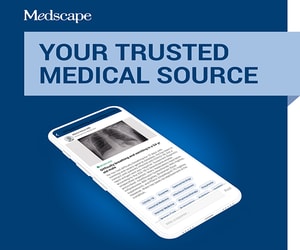A Miracle of Medicine
The word "antibiotic" has always been to me a symbol of the miracles of modern medicine. Perhaps they're a bit ordinary these days compared with robotic surgery or capsule endoscopy, but in a different time, antibiotics literally changed the world. It began in 1928 when bacteriologist Alexander Fleming serendipitously realized that the growth of Streptococcus aureus was inhibited in a petri dish contaminated by mold. Within a few years we had sulfa drugs; rapidly followed by more effective beta-lactams, chloramphenicol, tetracycline, and by 1950, the aminoglycosides.
Unfortunately, while scientists were discovering new antimicrobial agents, we never developed the ability to swiftly identify an infectious agent, which might have permitted more targeted antibiotic therapy. Instead, broad-spectrum antibiotics became the vehicles of long-term innocent misuse of these live-saving drugs. But we underestimated the selective pressure that antibiotics were capable of exerting on bacteria. Within a few decades, it became clear that the overuse of antibiotics was fueling the natural evolution of the microbes we were trying to kill, encouraging them to develop resistance as rapidly as they were able.
Now, a vast and widening chasm divides the number of deadly antibiotic-resistant infections that we are seeing in healthcare and effective drugs to treat them. This situation is unlikely to change in the foreseeable future because too few of the right type of new antibiotics are making it through the drug development pipeline to match the pace of resistance.
How Did a Miracle Become a Crisis?
Paul Auwaerter, MD, MBA, Clinical Director, Division of Infectious Diseases at Johns Hopkins University School of Medicine, faces this problem on a daily basis. He recently described to me the convergence of events that has brought us to this point. "The patients are sicker than ever before, so we are using antibiotics more intensively, and the bacteria are changing in response. At the same time we have really lost ground in incentive mechanisms for creation and production of new antimicrobial compounds."
Few among the general public are losing sleep over antibiotic resistance or the absence of effective new antibiotics. People generally have faith or have been lulled into believing that medical scientists can develop effective new antibiotics whenever needed because they have always done so in the past.
By the time most people wake up to the realities of the situation, it will be too late. Antibiotic-resistant infections are becoming the next great equalizer, and this is not just a problem for the elderly or the immune-suppressed. Friends and family, rich and poor alike, will succumb to infections that should be curable but aren't, and everyone will be looking around for someone to blame.
And who should be blamed?
Pushy patients who refuse to leave the office without their antibiotics, even when told they don't need them?
Physicians who write antibiotic prescriptions for self-limiting viral illnesses out of fear of angering their patients or risking accusations of negligence?
Farmers who treat their animals with antibiotics to keep them healthy?
Pharmaceutical companies who won't invest in new antibiotic development?
Or regulatory agencies that make it difficult or impossible to get a new antimicrobial through the approval process?
The many factors that have contributed to the current crisis have already been debated, but these sobering facts remain:
More US patients die of MRSA infections than HIV/AIDS and tuberculosis combined.
Only 2 new antibiotics -- doripenem and telavancin -- have been approved in the past 3 years.
We have no drugs to treat infections with some strains of multi-drug-resistant gram-negative bacilli, like Pseudomonas aeruginosa and Actinobacter baumannii.
We may finally have arrived at the era of the untreatable bacterial infection.[1]
Medscape Infectious Diseases В© 2010 WebMD, LLC
Cite this: Laura A. Stokowski. Emerging Antibiotics: Will We Have What We Need? - Medscape - Feb 03, 2010.






Comments